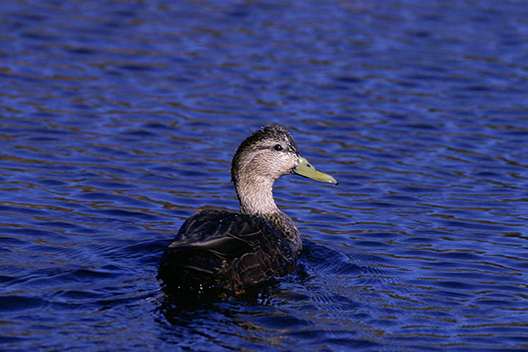MSU researching decline of black ducks
Published 1:28 pm Saturday, October 28, 2023

- Photo by United States Fish and Wildlife Service.
Staff Reports
MSU College of Forest Resources
STARKVILLE — Approximately 10,000 years ago, the last glaciers retreated, helping form the northern prairies in North America. Among dozens of waterfowl species, mallards and black ducks settled in what are now Canada and the United States. These species share many common traits, but they remained geographically partitioned until recent history.
“When the glaciers melted, mallards settled in the prairie wetland systems of southern Canada and midcontinental United States, whereas black ducks settled in the northeastern United States, and their breeding ranges were separated by boreal and hardwood forests,” said Dr. J. Brian Davis, FWRC scientist and James C. Kennedy Endowed Chair in Waterfowl and Wetlands Conservation. “Over time, humans settled these areas and cleared forestland, and mallard populations gradually shifted eastward.”
Mallard populations have thrived in the United States, but in contrast, the numbers of what Davis calls the “iconic” American black duck (Anas rubripes) have gradually declined over the last 50 years. Annual winter surveys flown by aircraft each year from November through January by the U.S. Fish and Wildlife Service, or USFWS, have documented these declines in historical wintering areas of west-central Tennessee. The number of black ducks, for example, declined from 35,200 to 807, or 98%, between 1990 and 2019 at Tennessee National Wildlife Refuge (TNWR).
In the winters of 2010-11 and 2011-12, the USFWS initiated a study at the TNWR, one of the most important mid-continent waterfowl sanctuary and wintering location for Mississippi Flyway black ducks. The research team including Davis, fellow FWRC scientists, a professor from the University of Tennessee, and former MSU graduate student and lead author Kira Monroe, set out to investigate the habitat selection and patterns of wintering black ducks at the refuge.
“While USFWS had an enormous amount of data on bird numbers over several years, no published study had ever tagged birds with radio transmitters and observed their habitat use on and off the refuge,” Davis said.
The team spent two winters radiomarking a total of 111 black ducks. During the second season, they also tagged 14 mallards. The tags provided feedback on the movement and locations of the ducks. In another companion study from the University of Tennessee-Knoxville, graduate students also observed individual duck behaviors from blinds onsite over two winters.
At the beginning of the study, Davis and his team speculated that mallards could be outcompeting black ducks for food or refuge habitat space. However, the location data and site observations gathered during the study supported no evidence of competition between mallards and black ducks.
“Having ruled out competition from mallards, we came away with two possible hypotheses about the black ducks: one, breeding populations that served these wintering areas were declining, or two, the populations were redistributing, with a number of birds staying further north due to climate change,” Davis said.
As the first published study to radiomark black ducks at this primary southernmost wintering site, the team’s research lays the foundation for more studies to follow. The study is also valuable from a refuge management perspective. The team observed the specific types of habitats the black ducks prefer and found that, while they did use flooded agricultural land, they preferred native herbaceous wetlands and “scrub-shrub” wetlands over other land cover types.
“Ultimately, we wanted to know whether or not the refuges were meeting the needs of black ducks,” Davis said. “From our findings, we suggest refuges provide habitats with a variety of land cover types, particularly the herbaceous and scrub-shrub wetlands.”





